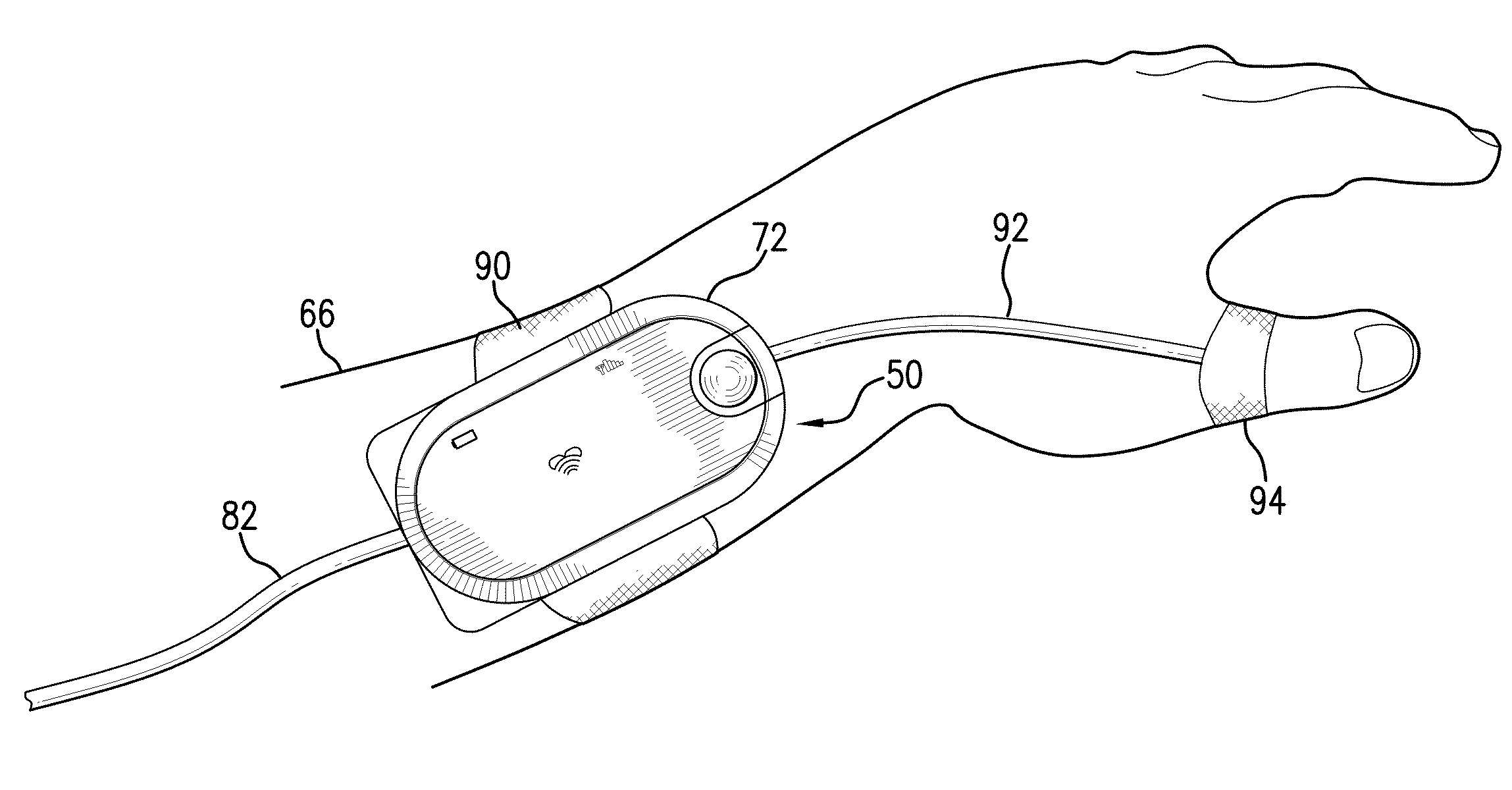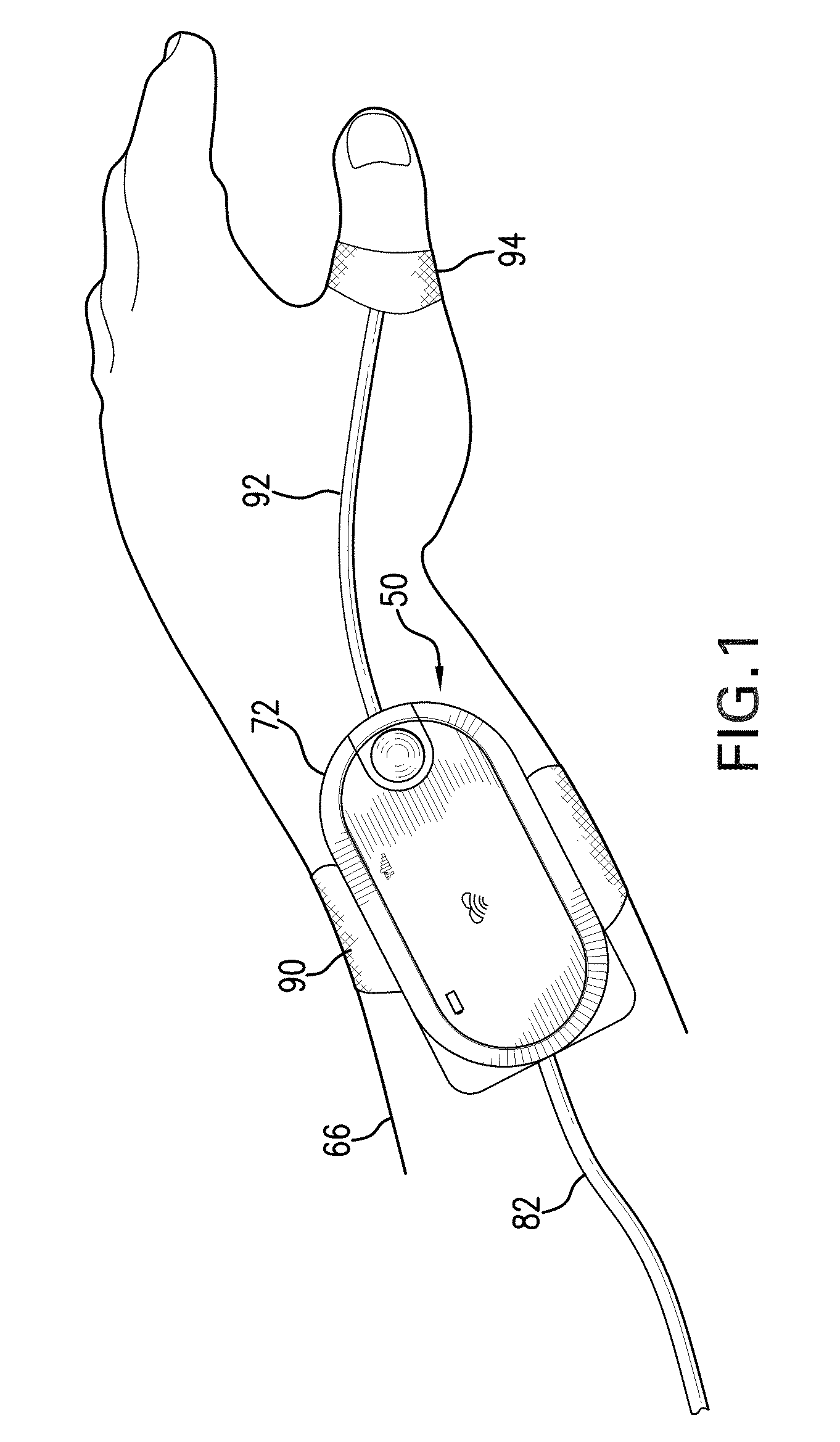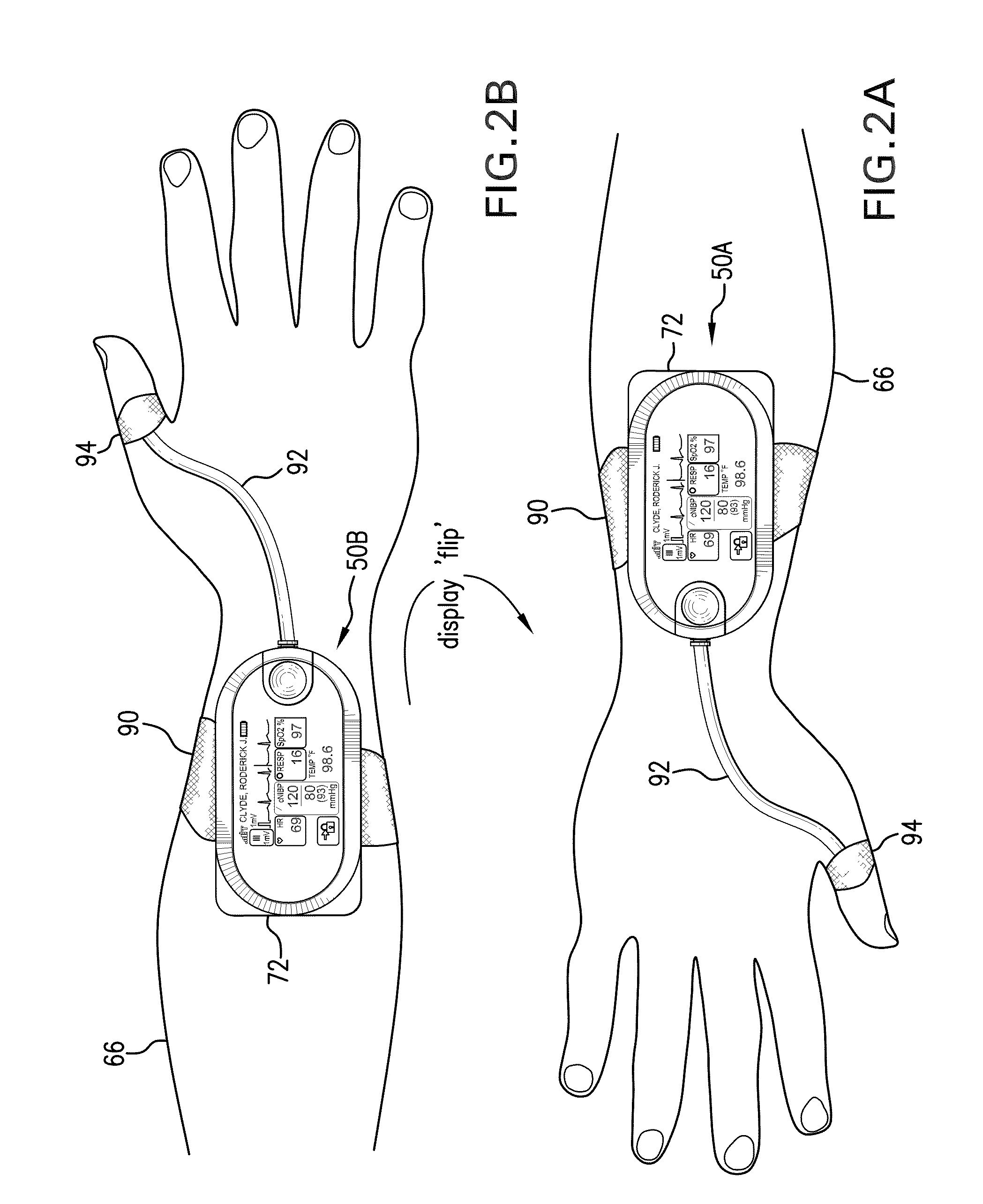Body-worn vital sign monitor
a vital sign and monitor technology, applied in the field of medical devices for monitoring vital signs, can solve the problems of limited capabilities, difficult to effectively monitor patients in this way, and conventional vital sign monitors, so as to improve the safety of hospitalized patients, effectively monitor patients, and minimize the corruption of vital signs
- Summary
- Abstract
- Description
- Claims
- Application Information
AI Technical Summary
Benefits of technology
Problems solved by technology
Method used
Image
Examples
Embodiment Construction
System Overview
[0067]FIG. 1 shows a transceiver 72 according to the invention that attaches to a patient's wrist 66 using a flexible strap 90. The transceiver 72 connects through a first flexible cable 92 to a thumb-worn optical sensor 94, and through a second flexible cable 82 to an ECG circuit and a series of chest-worn electrodes (not shown in the figure). During a measurement, the optical sensor 94 and chest-worn electrodes measure, respectively, time-dependent optical waveforms (e.g. PPG) and electrical waveforms (e.g. ECG and IP), which are processed as described below to determine vital signs and other physiological parameters such as cNIBP, SpO2, HR, RR, TEMP, pulse rate (PR), and cardiac output (CO). Once measured, the transceiver 72 wirelessly transmits these and other information to a remote PDS and RVD. The transceiver 72 includes a touchpanel display that renders a GUI 50 which, in turn, displays the vital signs, physiological parameters, and a variety of other features...
PUM
 Login to View More
Login to View More Abstract
Description
Claims
Application Information
 Login to View More
Login to View More - R&D
- Intellectual Property
- Life Sciences
- Materials
- Tech Scout
- Unparalleled Data Quality
- Higher Quality Content
- 60% Fewer Hallucinations
Browse by: Latest US Patents, China's latest patents, Technical Efficacy Thesaurus, Application Domain, Technology Topic, Popular Technical Reports.
© 2025 PatSnap. All rights reserved.Legal|Privacy policy|Modern Slavery Act Transparency Statement|Sitemap|About US| Contact US: help@patsnap.com



